Before 2015, it took expensive professional equipment made up of multiple, separate cameras and powerful computers and software to create immersive video like the kind Google Maps shows in its Street View mode.
Enter the smartphone, which has forced camera, processor and sensor technology to shrink so quickly that small, 360-degree cameras became not only possible, but affordable. The first crop of consumer cameras started showing up last year, and this year you’ll be able to toss one in your bag to shoot video at your next wedding, birthday party or travel adventure.
And it’s important to specify that shooting with a 360-degree camera simply means that it captures a horizontal 360-degree wraparound view. If you want something that captures vertically all the way up and down, too, you’ll need a camera that shoots 360×180-degree spherical images. Of course, it’s also worth noting that Google’s Cardboard “VR viewer” is generally used more for videos of the former type, like those being produced for The New York Times and Sports Illustrated.
Really, though, this whole 360-degree camera category is a work in progress at the moment. Judging by the video we’ve seen from them so far, they’ve got a ways to go before they’re able to compete with the quality from more traditional cameras. But, if you’re itching to create movies that drop your viewers into new experiences and do it without a complex, expensive array of cameras and lengthy editing sessions, it’s a category worth exploring, starting with the list below. Everyone else should probably just sit this round out.
Ricoh Theta S
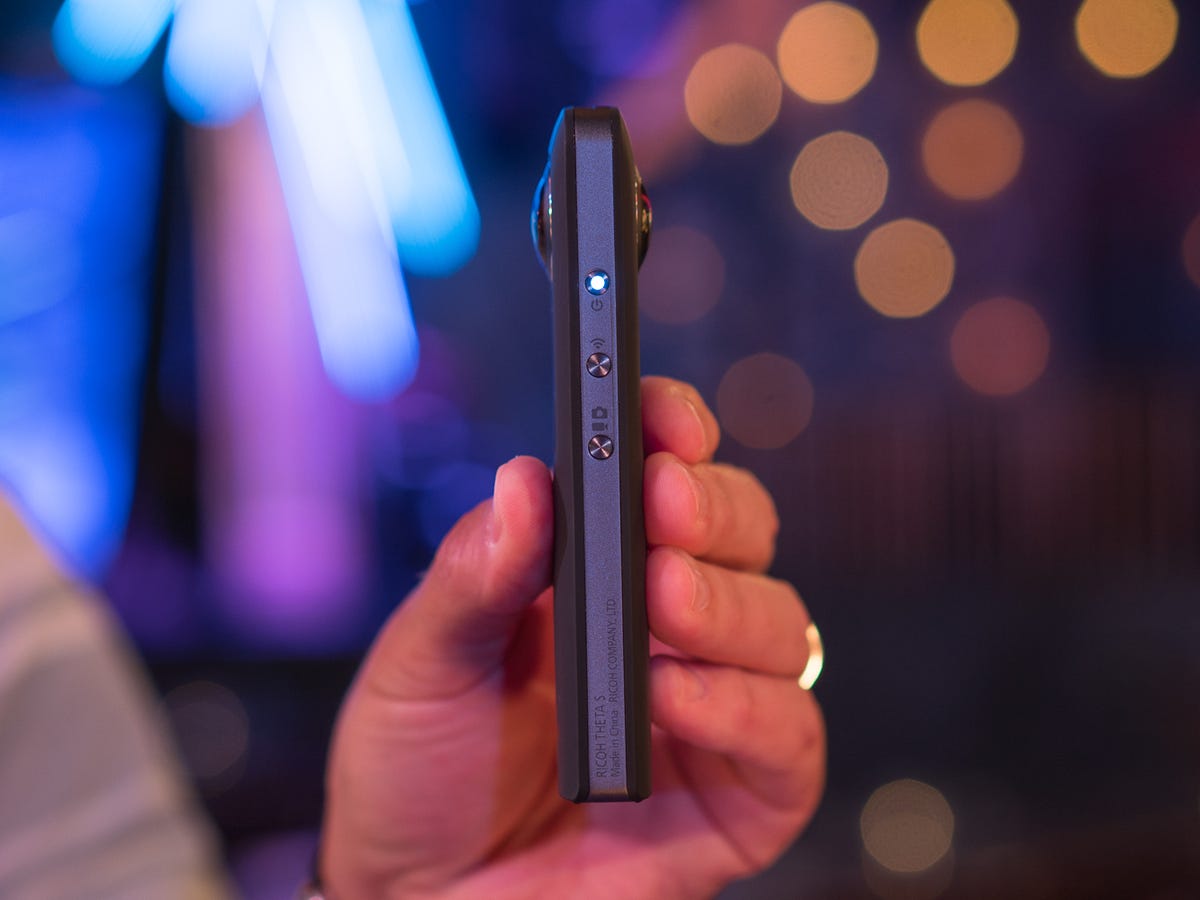

Lori Grunin/CNET
It looks a bit like some sort of sci-fi mind eraser — think “Men in Black” — but if you want a simple way to capture spherical video and photos, the Theta S is one of the best options that’s currently available. Priced at $350, £300, or AU$500, its twin f2.0 lenses each have a 12-megapixel image sensor used to create 5,376×2,688-pixel-resolution equirectangular JPEGs — that’s what you get when you flatten a 360-degree image. It can also record spherical video with stereo sound in full HD at a usable 30 frames per second for up to 25 minutes. And it’s all done with one button press.
360fly 4K
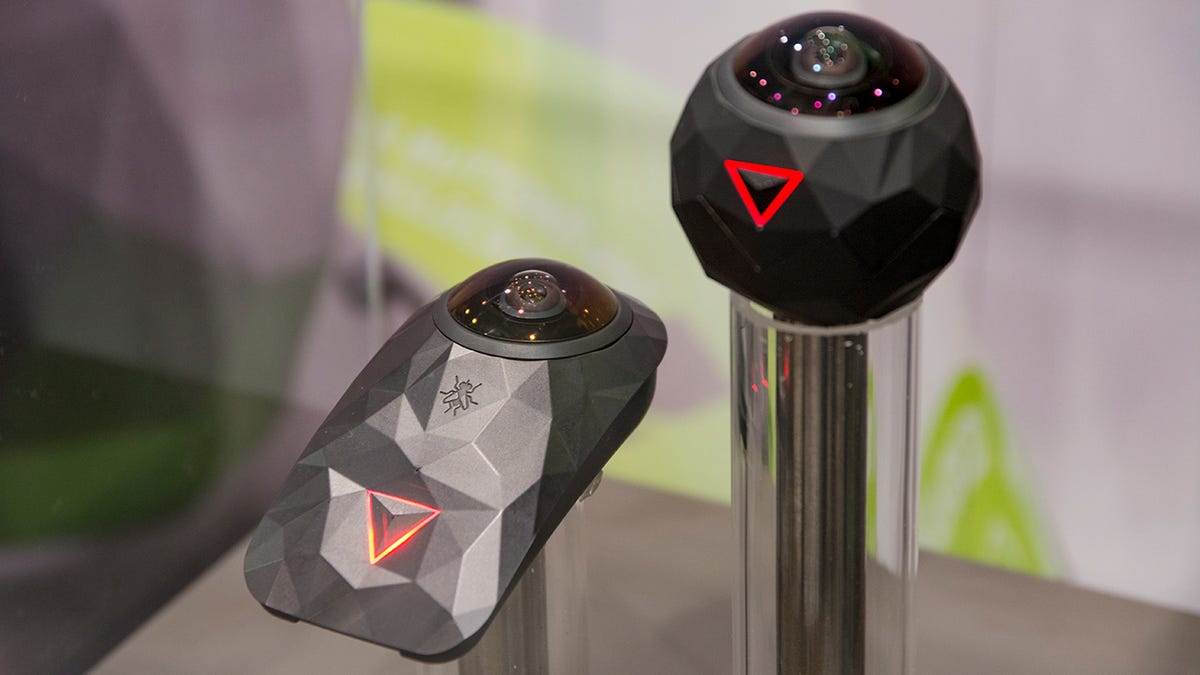

360fly 4K (right) and a smart helmet version (left) made for select Bell and Giro helmets.
Joshua Goldman/CNET
The people behind the 360fly used more than a decade of experience developing panoramic solutions for military and aviation to make this tough little single-lens action cam that’s water-, dust- and shock-resistant. By using a single lens, you avoid having seams in your video created by stitching together shots from two or more cameras. The tradeoff is you don’t get a spherical image. The original 360fly is available now for $400, AU$600 or £430 and records at 1,504×1,504-pixel resolution at 30 frames per second.
The upgraded 4K version ($500 when it ships in the spring) records at a resolution of 2,880×2,880 pixels at 30fps, but will also have a front-facing mode for recording regular widescreen video at 2,560×1,440-pixel resolution with a field of view of 178×100 degrees. (For the record, what looks like less than the traditional 4K resolution of 3,820×2,160 pixels actually works out to the identical 8.3-megapixel total, thanks to a square-ish capture ratio.)
Kodak Pixpro SP360 4K
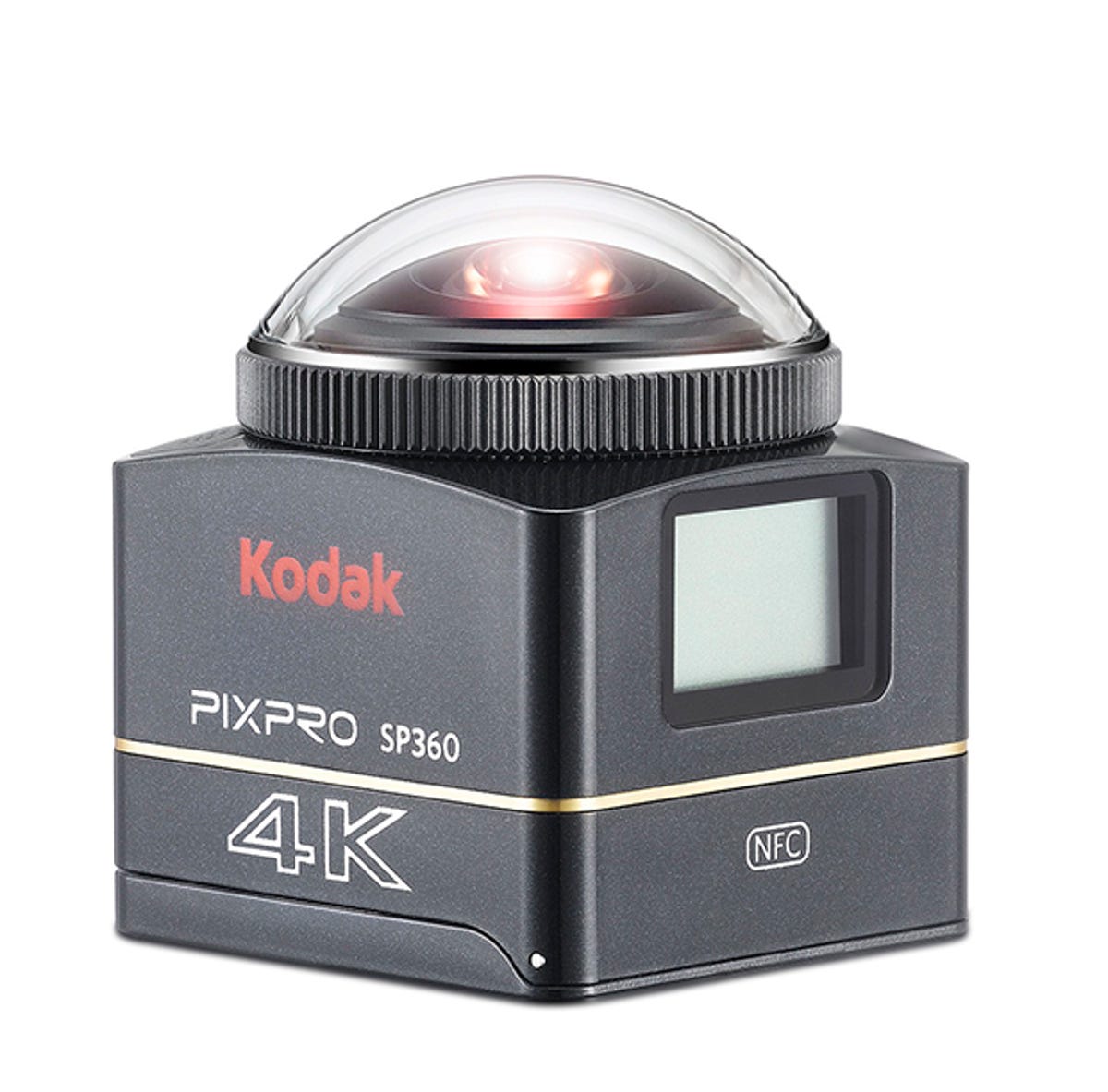

Kodak
Like the 360fly and Kodak’s first SP360, the SP360 4K uses just one lens to capture its 360-degree panoramic view. Unlike with the 360fly, you can use two of these cameras simultaneously to give you a full spherical video once the footage is stitched together with included desktop software. A single camera can be aimed up or down to capture 2,880×2,880-pixel-resolution video or be pointed forward for a widescreen video at 4K UHD (3,840×2,160 pixels). There’s a bonus for owners of 3DR’s Solo drone: Kodak has a mount that lets you put an SP360 4K on the top and bottom of the quadcopter. A single camera will set you back $500, while a dual pack runs $900. That converts to about £345 and £620 and AU$700 and AU$1,270.
Giroptic 360cam
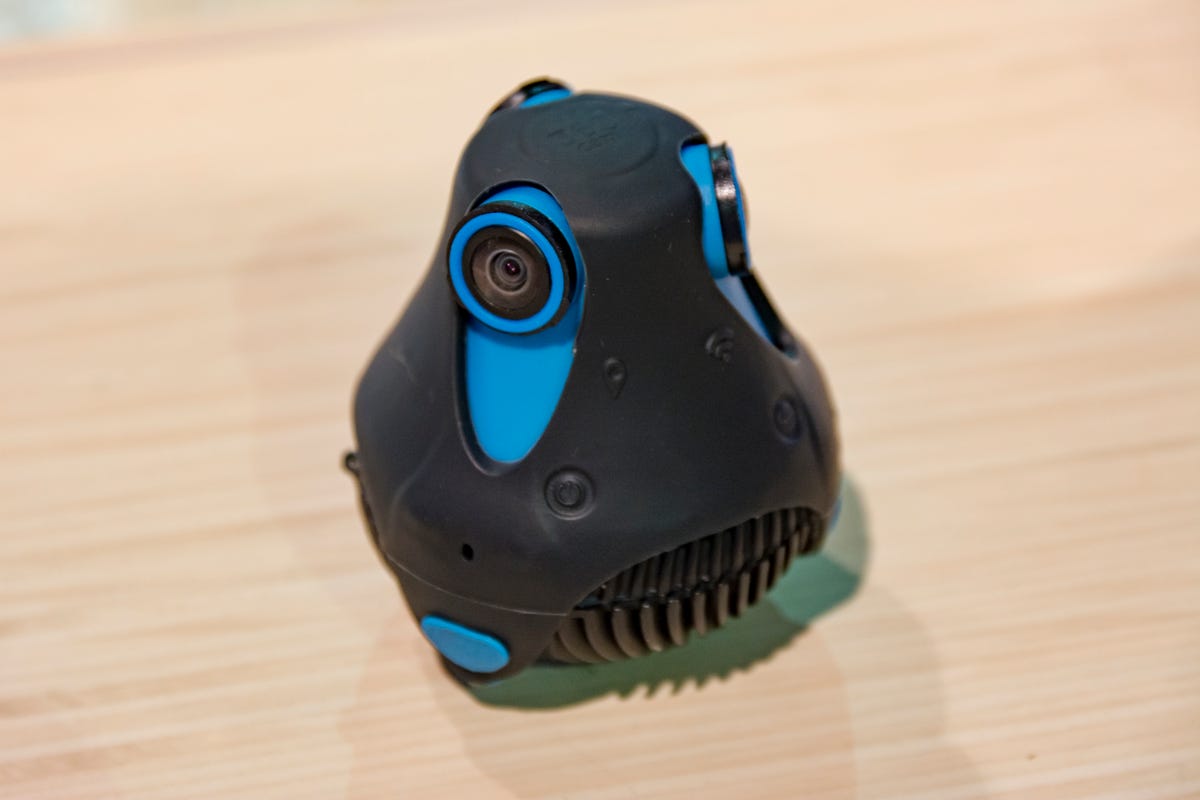

Joshua Goldman/CNET
While the 360Cam’s long list of features includes being completely waterproof down to 33 feet for up to 30 minutes, it’s the camera’s interchangeable base that really makes it stand out. The standard base packs a removable rechargeable battery, but you can swap it out easily for a light bulb socket adapter (so you can use the socket of a table lamp to power the camera) or an Ethernet base that can supply both power and network access for livestream video. After a very successful Kickstarter campaign that had a projected delivery date of November 2014, the company is only now ready to ship to its backers (its angry, angry backers). If you want one of these $500 cameras (approximately AU$700 and £345), you’ve likely got a wait ahead of you.
Bublcam
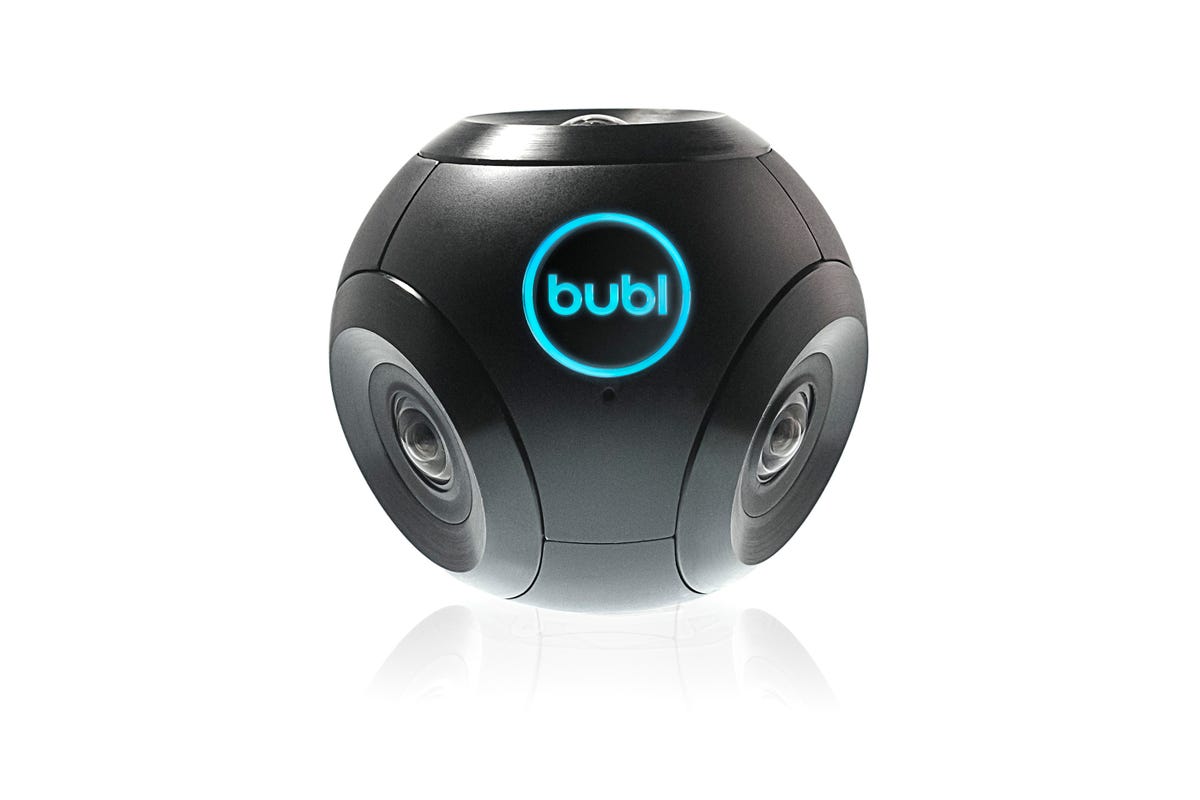

Bublcam
This ball-shaped camera is pricey at $800 (that converts to AU$1,120 and £560), but packs four cameras, resulting in a complete sphere with no blind spots, and all the processing and image stitching is done in-camera. You can upload its 14-megapixel photos directly to Google Maps and Street View and upload its videos — recorded at 720p at 30 frames per second or a near-pointless 1,080p at 15fps — to YouTube and Google+. Its video is also viewable with the current crop of VR headsets and Google Cardboard. If you’re interested, you can buy it through the company’s site, but due to high demand the company cannot guarantee a shipment date.
Coming soon?
Making a 360-degree camera is hard. All of the start-up crowdfunded ones I’m aware of such as the Bublcam and Giroptic 360cam experienced long delays. Other developers make preorders an option, but they’re just as likely to hit delays, really.
This year, it seems like major manufacturers will be shipping cameras for the category, but even they can’t seem to nail down availability. With that in mind, below are some of the models expected to ship this year.
Nikon KeyMission 360
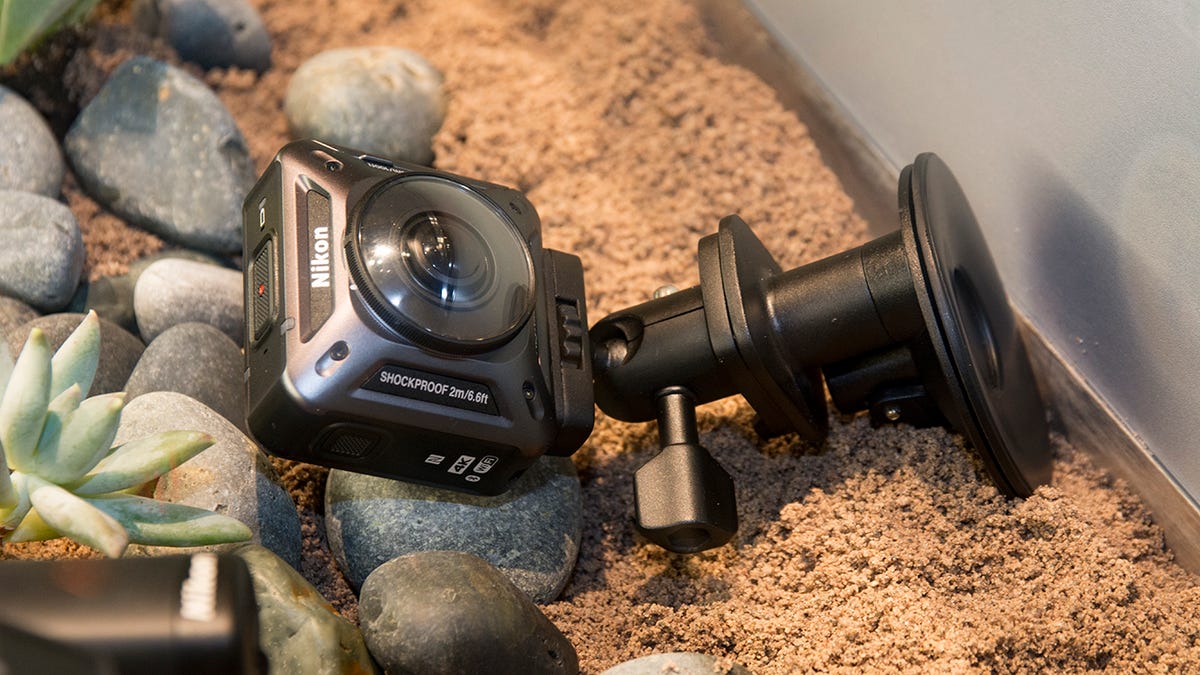

The first of Nikon’s action cam line, the KeyMission 360.
Joshua Goldman/CNET
Nikon is entering the action and 360-degree camera market in one fell swoop with the KeyMission. Announcing it at CES 2016, the company offered few details beyond its terrible name. It’ll shoot 4K Ultra High Definition (UHD) video with a 360-degree field of view on two sides for fully spherical video and photos. It’s rugged, too: shockproof to 2 meters (6.6 feet) and waterproof to 30 meters (100 feet). It also uses electronic image stabilization. It’ll be available sometime this year for some amount of money.
Samsung Gear 360
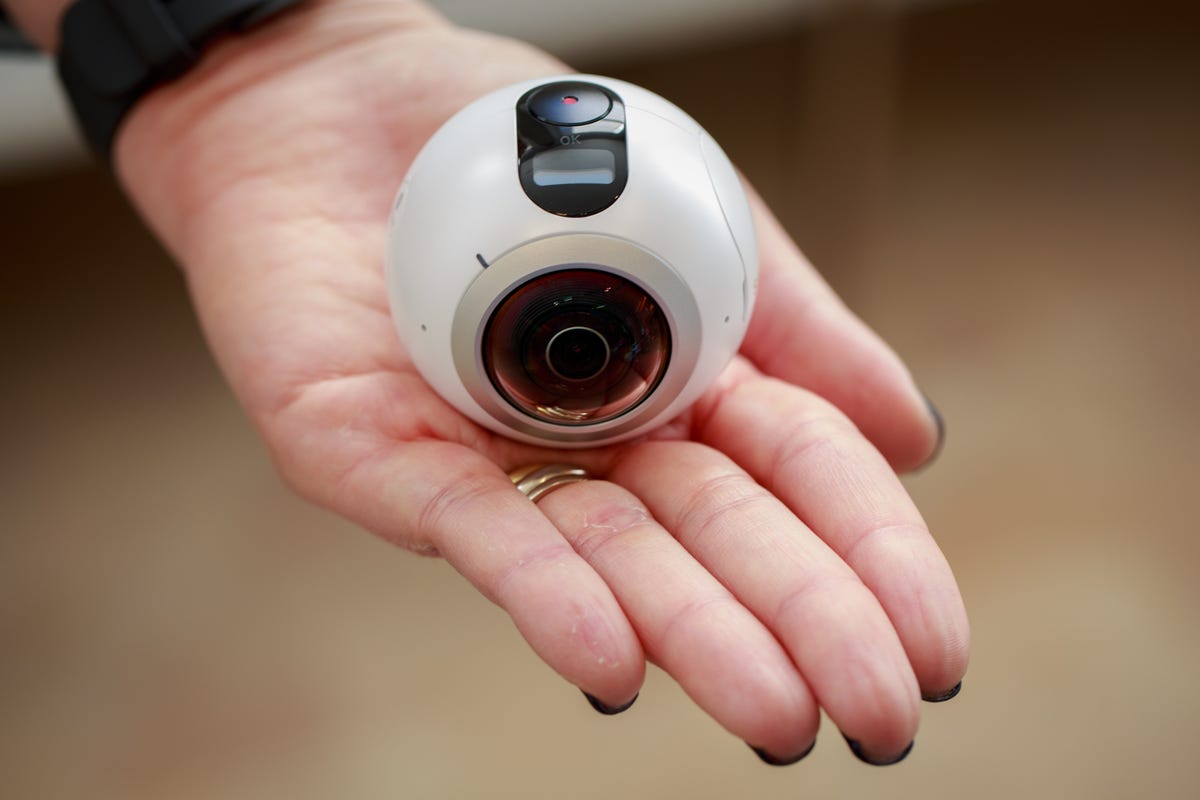

Samsung Gear 360
Josh Miller/CNET
What better way to get more use out of your Samsung Gear VR headset than with your very own 360-degree camera. This twin-lens ball of a camera captures spherical 30-megapixel photos and not-quite-4K resolution video (3,840×1,920 pixels) ready to be streamed to a Galaxy S7 or other supported Galaxy phones to be named later. The dust- and water-resistant camera can also be used in a single-lens mode, giving you more of a typical action-cam result.
Availability for the Gear 360 is scheduled for the second quarter of this year, and there is no pricing yet. I would expect it to be at least a few hundred dollars, though with Samsung making the editing/playback device and the VR headset, it’s ripe for bundling.
LG 360 Cam
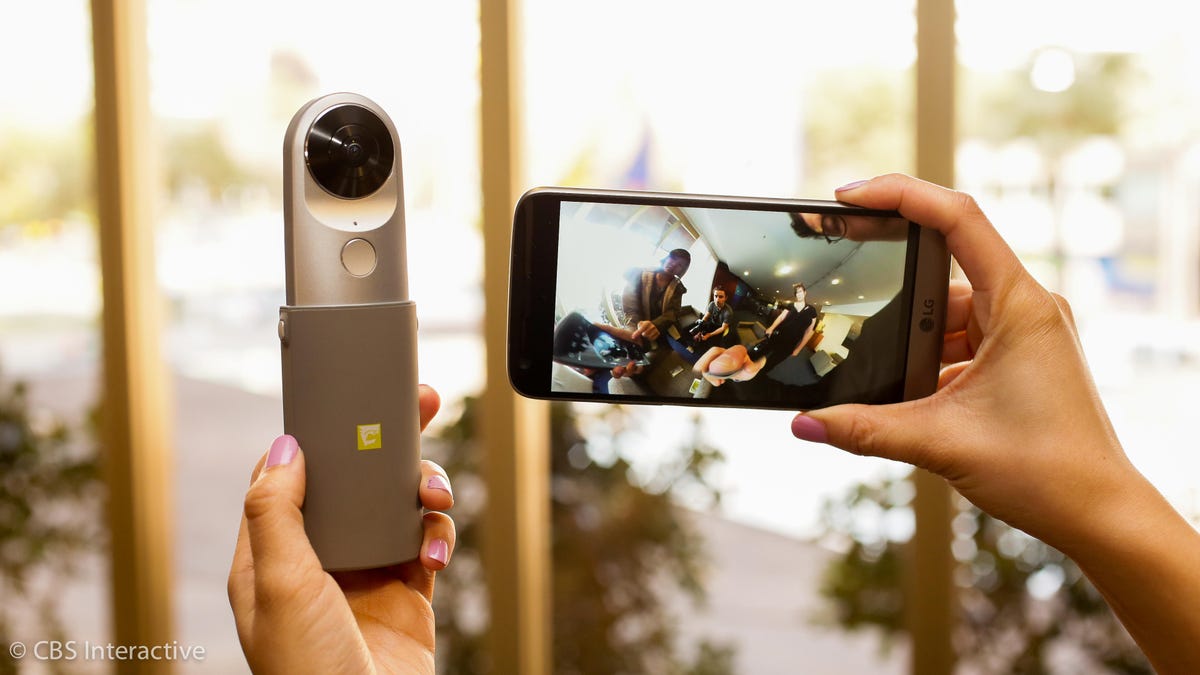

LG 360 Cam
Sarah Tew/CNET
Debuting alongside the G5 smartphone and a long list of other accessories LG revealed at Mobile World Congress 2016, the South Korean electronics giant has promised its first camera for creating spherical video and pictures: the 360 Cam.
Instead of a ball like Samsung Gear 360 or a box like the Nikon KeyMission 360, this two-lens camera looks very similar to Ricoh’s Theta cameras, though not as nice, like it was quite possibly a design rejected for being too bulky and unremarkable. Regardless, at the top you’ll find two lenses, each with an angle of view of 200 degrees — ample coverage for stitching together for a single spherical image. A shutter release just below the lens lets you quickly snap a 360 selfie or grab some 2K-resolution video.
No pricing or availability was announced, but I’d expect it to roll out around the time of its LG 360 VR glasses and the G5, currently set for some time in April.
Vuze


Joshua Goldman/CNET
The Vuze camera made its first public appearance at CES 2016. The palm-size camera was promoted as the “the world’s first consumer, portable 360-degree 3D VR camera.” Around its sides are eight full-HD cameras with 180×120-degree lenses that, when the results are stitched together, can create spherical 4K video in 3D. On top of that, the company says the accompanying Vuze Studio desktop software can process in real time, taking 1 minute to render 1 minute of video. You can read a little more about it on the company’s site where you’ll also be able to preorder one in March for $900, with an expected ship date of August 2016. That price converts to around AU$1,260 and £630. It’ll be bundled with a specially designed selfie stick to boot.
LucidCam


Lucidcam
The LucidCam is technically not a 360-degree camera, but a 180-degree 3D camera, so it’s here as an honorable mention. Why’s that? Because the plan is that if you have three of them, you’ll be able to connect them together as in the picture above and capture 360-degree video in full HD and in 3D (it will do photos, too). The goal is simplicity here, capturing with a single button press. The LucidCam started off as an Indiegogo campaign with shipments to backers expected in July. You can preorder one through the company’s site for a projected November delivery for $400 a pop (roughly £280 or AU$560).




